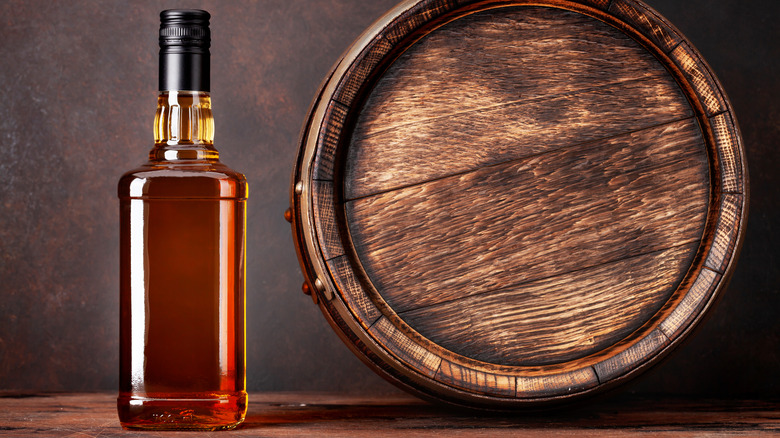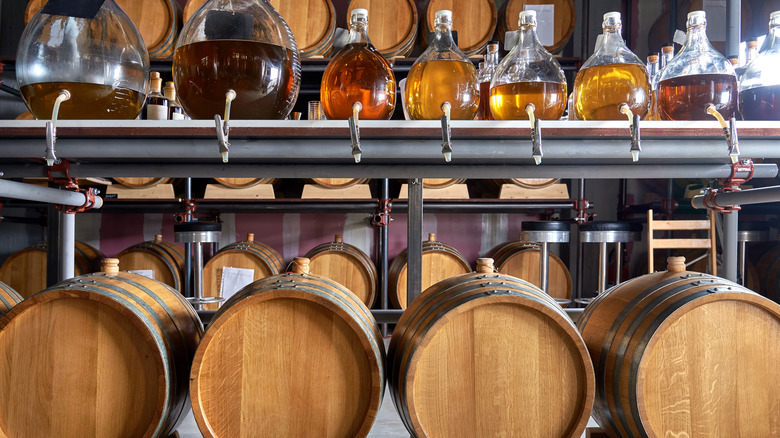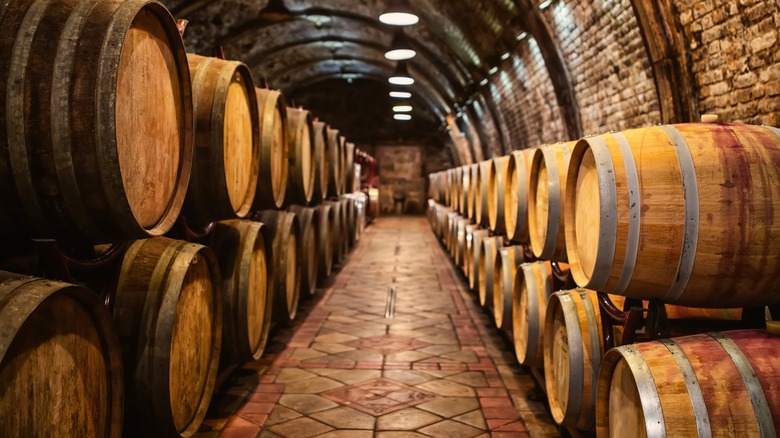What Does Single Cask Whiskey Actually Mean?
Let's say you're at the home of a whiskey fanatic, and they pour you a dram of scotch, bourbon, or rye, noting this whiskey is "single cask."
"Oh really?" you ask, feigning understanding, "How lovely." Next time, you can be prepared to continue the conversation because this whiskey jargon is actually easy to understand, even for a neophyte.
Single cask whiskey is bottled from a single barrel, instead of being blended with a variety of whiskeys that have aged in different barrels. You'll also see it referred to as a "single barrel," particularly when it comes to bourbons.
It's often marketed as an expression of purity, showcasing a specific, unadulterated product of a distiller's mastery. These projects are usually undertaken by smaller whiskey producers, since large, well-known whiskey companies often blend from a large number of barrels to achieve a more consistent flavor profile from one bottle to the next.
As different barrels lend their unique flavor to whiskeys (and are also what give whiskey its signature brown color), single cask varietals are all distinctive. And since one barrel of whiskey holds only between 250 and 300 bottles, single cask whiskeys can fetch high prices, or even become collector's items.
Single cask vs. blended whiskey
As mentioned, most whiskey sold worldwide is blended from different barrels, which come from different distillers. It's the job of the Master Blender at a distillery to determine what blend will result in the most well-balanced whiskey. They take into consideration different grain distillates, the type of barrels they are aged in, and how long they are aged, depending on the needs of the distillery or brand. And then they put together everything at the end of the process, bottling it as a complete whiskey.
On the other hand, a single cask whiskey is not blended, and must be tasted periodically during the aging process to determine at what point its flavors have sufficiently matured in order to bottle it. Once the whiskey is ready, additional tastings will take place to determine whether or not it should be diluted, and by how much, or whether it can be bottled at cask strength.
The flavors of single cask whiskey can vary dramatically, from a smoky peated single cask Scotch, to a sweet, caramel-scented single cask bourbon. But the major differentiating factor from blended whiskeys, taste-wise, is that they won't be consistent with the established taste of a particular brand. For example, you're probably familiar with how Jack Daniel's tastes, since it's blended to taste the same in every bottle. But if Jack Daniel's made a single cask whiskey, there would be no way for you to anticipate what it would taste like.
Barrel location affects the taste of whiskey
When barrel-aging spirits, it's important for distillers to factor in how different barrels and their placement will affect the final taste. This is an especially important consideration for single cask whiskeys, as you only get one barrel, so you're locked into the tasting notes that come with it.
Smaller barrels will increase the concentration of flavor from the wood, which usually manifests in notes of vanilla, baking spices, or oak. Barrels that have already been used once or more to age whiskey will impart less flavor from the wood.
You can also achieve different notes from aging whiskey in Sherry, Madeira, Cognac, Armagnac, or other barrels, each of which will impart notes from that wine or spirit. The type of wood matters as well. American oak imparts flavors like caramel, coconut, vanilla, nutmeg, and cinnamon, while French oak imparts flavors of cardamom and sandalwood, and adds structure and elegance.
Barrels are porous, and take in flavors from outside elements as well. Coastal distilleries may result in a saltier, brinier whiskey, whereas distilleries located on mountaintops may produce whiskey that is more dry and aromatic. Even barrels of whiskey in the same storage room can produce different flavors depending on whether they are in a cooler spot near the floor, or a warmer spot near the ceiling. As such, each barrel of single cask whiskey will tell its own story, from grain to glass.



